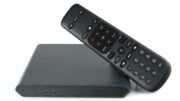About 18 months ago I got my first TV with Dolby Vision. It’s not that I wanted to wait so long (it’s been around since 2014) but I tend to keep my TVs a while. The last time I replaced a big one, Dolby Vision was still expensive and largely unsupported. It took me a while to wrap my head around the technology, and when I did, I complained about it. You can read that complaint here. My biggest complaint is that it didn’t seem very well implemented. Most Dolby Vision content works best in a darkened room but most people watch TV in a decently lit room. An update to Dolby Vision, called Dolby Vision IQ, helps with that problem but it’s not very common as I write this in 2023.
The biggest problem with Dolby Vision, and other HDR formats, is that the picture seems darker and duller than it should. The reason behind this makes sense, but it’s still not completely satisfying. There are three reasons, actually. One is, well, sort of OK, one is is a little annoying and one, well, is a little insulting. Let me explain.
Reason one: TV calibration
Folks, I’ve been calibrating TVs for home theater for about 35 years, a little more actually. Back when I used to do it, it involved bringing a 3/4″ video tape player and a special tape bought from the Society of Motion Picture and Television Engineers. It’s gotten a bit easier since then. Calibration involves changing settings like brightness, contrast, etc. so they conform to established standards.
Back in the 1980s, I thought all TVs should be calibrated. And to some degree, I still think I was right. Those standard-definition tube TVs couldn’t show as many colors as today’s TVs, and it was important to get as much quality as possible out of them. But, as my eyes (and the rest of me) aged, I came to a very important conclusion. Calibration works best if you’re young. As your eyes age, you can’t see as many colors. You lose the ability to see darker colors, and overall your perception becomes more yellow. TV calibration does nothing to compensate for this, and so a TV that looks perfect to a 26-year-old may not look perfect to a 66-year-old.
Dolby Vision is, essentially, factory-supplied calibration. The manufacturer does all the work and the testing and builds in the settings needed so that everything looks consistent. LCD panels, used in most TVs, don’t age the same way that tube TVs did, so the calibration works for a longer time.
The problem is that as you get older, you might actually want that TV to be brighter than “factory calibration.” You might also want the colors to be purer. This will help you see the picture the factory intended, using the eyes you actually have. Dolby Vision doesn’t account for that. So, if you’re used to having a bright TV, a calibrated picture will seem dim. It’s more “accurate” but it won’t feel like that to you.
Reason two: Some companies don’t know how to do it
You may have noticed that your Dolby Vision or HDR problems are worse on some apps than others. I’ve sure noticed that, and I wrote an article about it here. Apparently the way videos are encoded on different services can cause issues with HDR. This is a big deal because it can be hard to turn HDR off in some cases.
It seems that Hulu is using an older implementation of the HDR standard and potentially driving its content intentionally to the dark side as it’s encoded. I don’t know why they do this, especially since their sister app, Disney, has one of the best Dolby Vision implementations.
Eventually, this particular reason will stop being important. The smart money is on Hulu folding itself into Disney+ in the next few years and then the problem will probably go away.
Reason three: You’re a cheap so-and-so
OK, that’s harsh. But it’s also not wrong. I bought a 27″ reference-quality TV in the 1980s. It cost me about $700. That amount of money is equivalent to $1,800 now. Yet you wouldn’t pay that amount of money for a 27″ TV today. If you were to pay $1,800 you would want a 70″ or larger TV that beats the pants off the old one. The electronics industry has trained us that TVs get cheaper and better every year. The problem is, sometimes that’s hard to pull off.
Today you can get a 50″ TV with Dolby Vision and a lot of other bells and whistles for about $500. (That’s the equivalent of $180 in the late 1980s, which is less than I paid for a cassette deck.) In order to get the price down that low, there need to be some compromises. One of those compromises is the reason that your TV looks dim when it’s in HDR or Dolby Vision mode.
The HDR standards are pretty flexible in the way they can be implemented. This is on purpose, as it allows more manufacturers to call their TV’s “HDR” when they aren’t up to the top level of quality. Depending on the TV technology, a TV can call itself HDR if it can output as few as 500 nits. (What’s a nit? It’s a unit of brightness. That’s all you need to know really.)
If a TV doesn’t have enough peak brightness to really blow you away with how bright it is, the other option for meeting the HDR standard is to make sure the TV can show stuff that’s really dark. However, in order to meet that standard, the TV’s brightness has to be set lower than you might want to set it. While this is technically more accurate, it also has the effect of making everything seem dull.
If your TV could output 2,000 nits, the midpoint of that curve would be bright enough that it wouldn’t be a problem for you. But that would take a much more expensive TV. And you, consumer that you are, won’t pay for it. That’s the bottom line.





